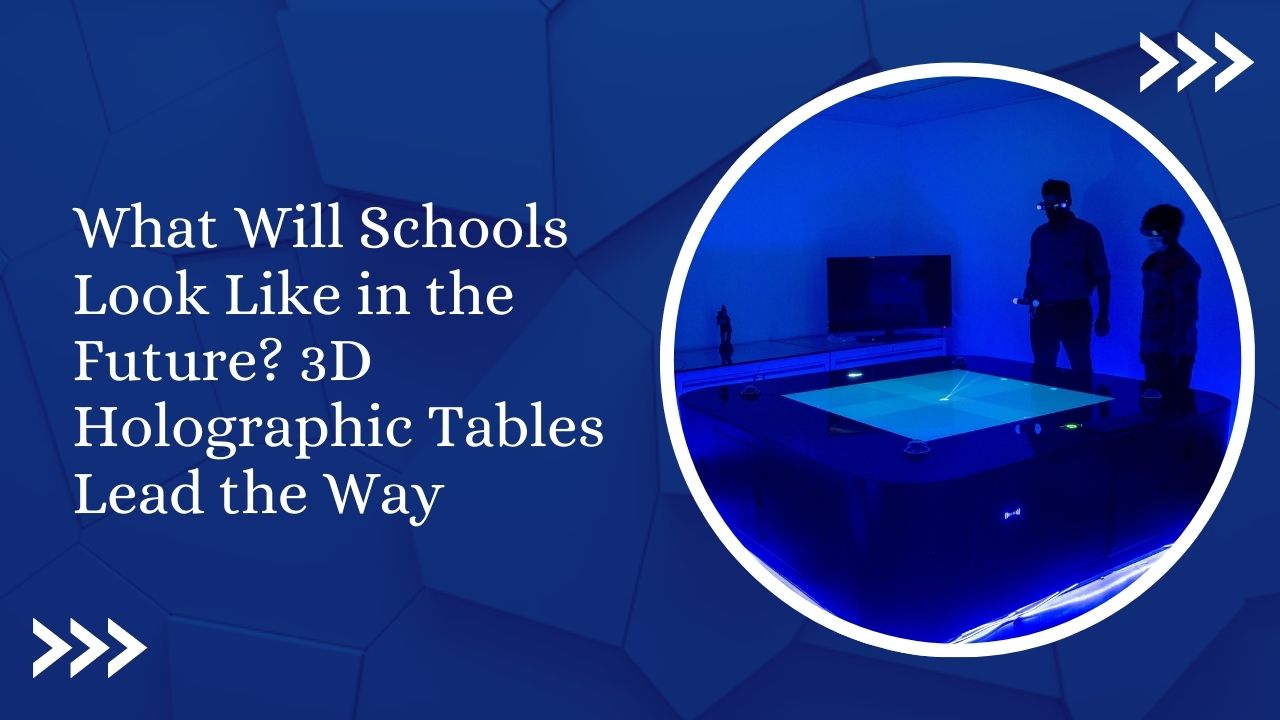The strategy of invention is a crucial objective of education improvement in the modern world that primarily concentrates on the user’s developing and improving their wisdom. One of the inventions that can increasingly modify classrooms across the globe i.e., 3D hologram tables. It indicates the futuristic models offer a convertible knowledgeable atmosphere, making multiple restrictions unrelated. So let us check in detail how these inventive techniques adjust into the wider package of modifying schools in the future.
What are the 3D Holographic Tables?
A hologram table is a captivating pattern that can be performed with the assistance of a 3-dimensional technique that includes the projection of original images and pictures in a 3D pattern on a wide table. It hires straightforward modification with the improved picture as small objects that arrive 3-dimensionally and can thus be worked in a real-time pattern. Such tables offer an interactive familiarity, allow students to engage and browse the content and enable maximum personality. They are modifying various domains of human insight involving education enabling the demonstration of content in realistic and interesting procedures. It is real because of differentiating from other conventional styles of adornments, 3D hologram decorations have exceptional potential to dislodge restrictions and enhance modification within the classroom walls, or even exceed other components approaching education for goodness.
How Does 3D Hologram Table Lead the Education?
A few steps given below demonstrate the usage of 3-dimensional hologram tables in the education industry.
Immersive Learning Environments
For the moment, one can simply assume in a class context, despite hearing the instructor informing you what occurred at a certain time, you get up to explore yourself in the age and everything neighboring it. One such observation is developing holograms a crucial fact of our regular lives and with 3D hologram tables, this is obtainable. Such tables develop 3-dimensional and animation screens of multiple lessons, making these learning steps exciting and assisting students better grip certain methods.
Interactive Engagement
The latest steps of teaching can be quite troublesome to immerse since regional teaching patterns can be restrictive in interacting with students. Still, 3D hologram tables provide a remedy by offering knowledgeable educational activities. Students can engage with multiple objects, organize research, and associate in the multiple evaluations, which is excellent because they might be with strangeness and significant part skills.
Personalized Learning Experiences
One of its strongest strengths is that it can be featured to fulfill the requirements of the different learning patterns as 3D hologram decorations are impressive in the preparation of teaching supports. Such tables could thus demonstrate content in such a pattern that signifies the requirements of each learner and this may include offering information at various rates and indicating the learning procedure to regions that need attention. It develops in the way that each kid obtains the focus and aid he or she requires to occupy new details.
Breaking Geographical Boundaries
3D holographic tables can perform as strong equipment to control geographical restrictions under the establishing situations when distance is a primary cause that differentiates users from accepting quality education. Viewers of various profiles can connect classes with teachers and other students and have impressive engagement with viewers all across the globe while utilizing facilities and classrooms for rural learning. This interacts to modify cultural engagement like never before.
Enhanced Collaboration
Learning is not a one-man show and 3D hologram technology enhances collaborative learning and teaching in ways that cannot be compared to earlier methods. People can also collaborate in groups especially where students can share their ideas, discuss problems, and even share their opinions in real time. This not only improves their interpersonal communication skills but also tries to make them fit to the global interactions that are becoming more exigent every day.
Teacher Empowerment
Thus, it is crucial to highlight the basic fact that though hologram technology that inspires such concepts is important for the future of teaching and learning, teachers remain the backbone of instruction. Originally, 3D holographic tables were useful to educators as these technologies equip the latter with strong means that can improve and develop their profession. It enables the creation of engaging lesson plans, the integration of various multimedia materials, and the tracking of students’ performance improvement to enhance the learning process.
Overcoming Obstacles
However, it is worthy of note that though 3D hologram tables are likable, their use may experience some issues shortly. Stakeholder’s resistance to change, technological and financial requirements, or lack of them, can be some of the challenges schools will face. However, learning disability obstacles can be mitigated through increased investment, training, and support, and with these measures in place, it is possible to envision a future where such problems would not present themselves as a barrier to the advancement of each student.
Conclusion
When it comes to future trends, it would be hard to miss the 3D hologram decorations integrated into inclusive education systems. These transformative technologies are in a position to revolutionize classrooms, redefine teachers, and offer an invigoration to learners in ways never imagined. This opens a world of possibilities that can be understood as a manifesto for change which asserts that there is no limit to learning and no child should be left behind. Joined together let us commence this mission to promote education for all in a more responsive, acceptable, and fair manner. To know more about internet deals, connect with Vision3D customer service number – +91-8971953451.
